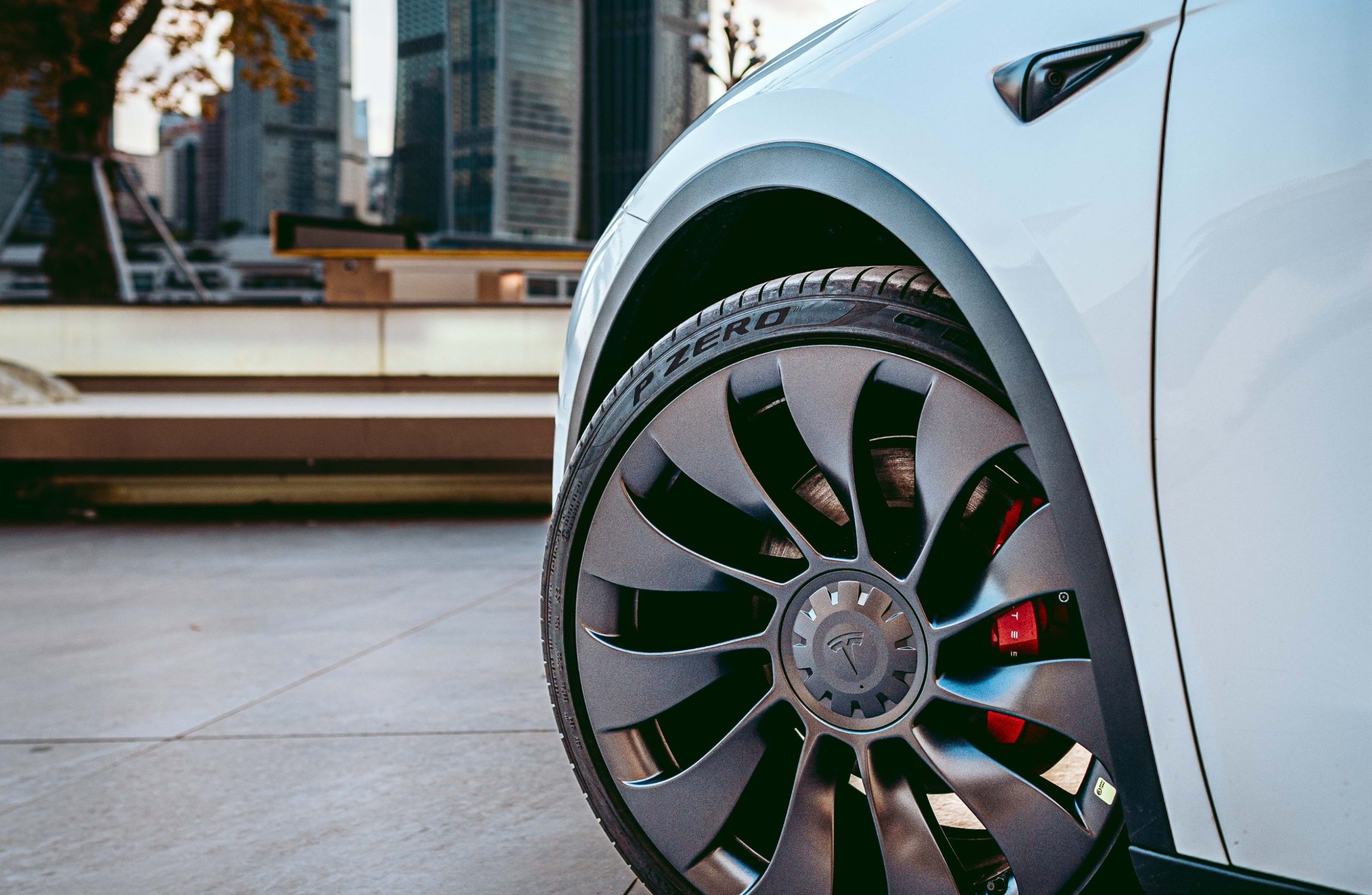
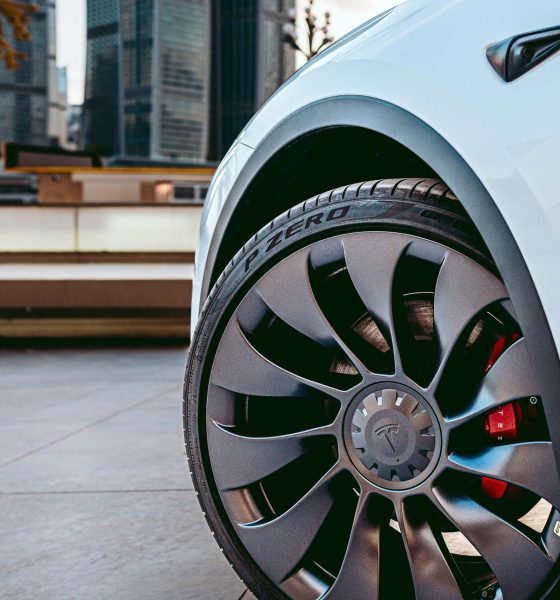
News
Despite Tesla’s growth, the EV revolution still caught the auto industry off guard
The signs of an EV revolution were all there, but it seems like consumer demand for all-electric vehicles was still able to catch veteran automakers off guard. With Tesla currently commanding about 70% of the United States’ electric vehicle sales in the first half of the year, the race to catch up to the trailblazer is on — but it’s a lot easier said than done.
It’s a pretty insane thought today, but when Tesla announced its plans to build a dedicated battery factory to support the Model 3’s ramp, many were skeptical. Back then, many still questioned if there really was a demand for electric cars. This is not the case anymore today. If auto executives were not sure if there would be buyers for EVs before, now they’re worrying if they can build them fast enough.
Electric cars only account for about 6% of the United States’ overall vehicle sales, but this percentage has tripled in the past two years. Meanwhile, sales of other types of cars have declined, as per insights from research firm Motor Intelligence. This was represented by the fact that five of the six fastest-selling cars in the US were electric or plug-in hybrids. Tesla’s Model Y, a crossover, is on track to become one of the world’s best-selling cars.
All-In on EVs
Veteran automakers have expressed their intention to go all-in on EVs, and some, such as GM CEO Mary Barra, have even stated in the past that she believes General Motors can pass Tesla in the future. The same is true for executives from Ford and Volkswagen. But inasmuch as it’s easy to announce such an ambitious target, accomplishing it is a completely different matter.
GM, for example, started its recent EV push with the GMC Hummer EV and the Cadillac Lyric. GM received a lot of support from the Biden administration for its electric vehicle efforts, so much so that Biden dubbed Barra as a leader who electrified the auto industry. Yet, according to The Wall Street Journal, people familiar with the matter have noted that the production of the Hummer EV and Lyriq is still at rates of less than a dozen a day. This was despite the waiting lists of both vehicles stretching into the tens of thousands.
And it’s not just GM. Ford is somewhat in the same boat. The Ford F-150 Lightning is an acclaimed vehicle, and its order books are extremely long. The demand for the vehicle was so notable that Ford had to double its production target twice. In 2020, the company expected its lightning factory to produce 40,000 of the pickups per year, a target that was doubled last year. This past January, as the order books for the Lightning continued to grow, Ford doubled its target again to 150,000 trucks by summer 2023.
Ford’s head of EV programs Darren Palmer provided an idea of the speed at which Ford had to adjust its Lightning targets. “The cement had barely joined to some of the walls, and we were already expanding,” he said.
A Rush for Supplies
A lot of the challenges faced by veteran automakers were due to a lack of parts from the supply chain, as well as a struggle to secure as many batteries as possible. EVs use more computer chips than combustion-powered cars, which made things very challenging during the chip crisis faced by the entire industry. Electric cars also rely on batteries, so carmakers are now in a battery arms race of sorts in an effort to ensure that their EVs can be ramped.
Ultimately, the Journal noted that automakers are in their current situation because many have lowballed their early EV production estimates. Thus, when electric vehicles took off during the pandemic, many executives in the auto industry were caught off guard. Couple this with the fact that newcomers like Rivian and Lucid are also entering the fray, and the auto industry is looking more and more like it’s in the cusp of some real changes.
In a way, it’s simple. If veteran automakers would like to catch up to Tesla, they have to make electric cars that people want to buy. The success of non-Tesla EVs such as the F-150 Lightning, Mustang Mach-E, and the Hyundai Ioniq 5 show that the EV market has enough space for multiple carmakers. But with demand for EVs increasing now, some automakers may end up watching EV only competitors like Tesla increase their lead in the coming years.
The question of whether there is demand for EVs has long been settled. In a statement to the WSJ, Earl Stewart, a Florida-based Toyota dealer, noted that there’s actually a lot of interest in the bZ4X. However, the vehicle’s availability is just not there. Stewart noted that mass adoption of electric vehicles would need affordable electric cars. That being said, he has already taken the leap to EVs — he currently drives a Tesla Model S Plaid.
“Until they bring the prices down, it will just be people like me who can afford to buy EVs and who want to be the first on the block to drive one,” Stewart said.
Don’t hesitate to contact us with news tips. Just send a message to simon@teslarati.com to give us a heads up.

News
Tesla dominates in the UK with Model Y and Model 3 leading the way
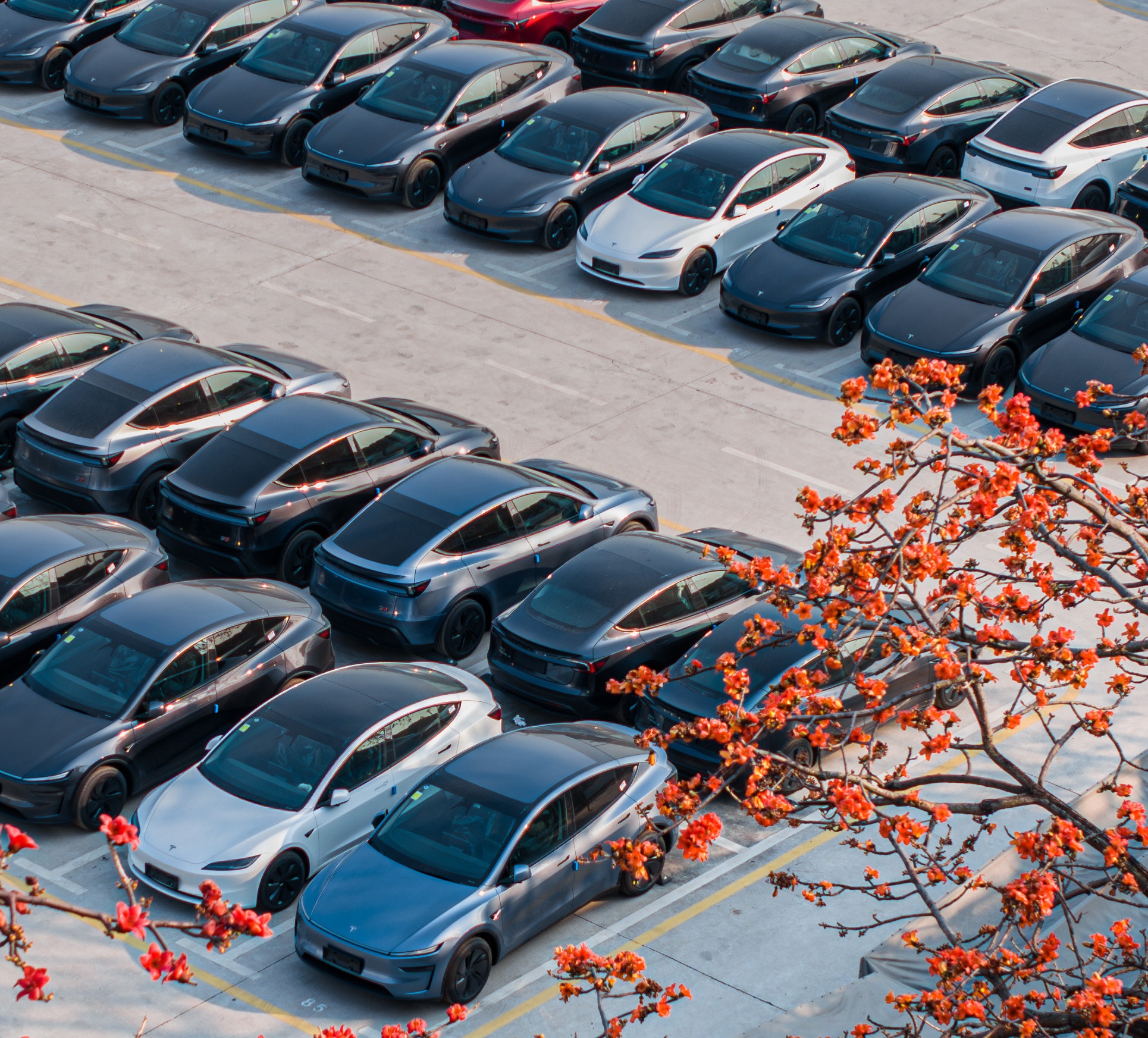
Tesla is dominating in the United Kingdom so far through 2025, and with about two weeks left in the year, the Model Y and Model 3 are leading the way.
The Model Y and Model 3 are the two best-selling electric vehicles in the United Kingdom, which is comprised of England, Scotland, Wales, and Northern Ireland, and it’s not particularly close.
According to data gathered by EU-EVs, the Model Y is sitting at 18,890 units for the year, while the Model 3 is slightly behind with 16,361 sales for the year so far.
The next best-selling EV is the Audi Q4 e-tron at 10,287 units, lagging significantly behind but ahead of other models like the BMW i4 and the Audi Q6 e-tron.
GOOD NEWS 🇬🇧 Tesla is absolutely crushing the UK electric vehicle market in 2025 💥
The numbers are in, and the dominance is clear. With an impressive amount of 42,270 vehicles delivered year-to-date, the brand now commands a solid 9.6% market share of the total auto market 🆒… pic.twitter.com/dkiGX9kzd0
— Ming (@tslaming) December 18, 2025
The Model Y has tasted significant success in the global market, but it has dominated in large markets like Europe and the United States.
For years, it’s been a car that has fit the bill of exactly what consumers need: a perfect combination of luxury, space, and sustainability.
Both vehicles are going to see decreases in sales compared to 2024; the Model Y was the best-selling car last year, but it sold 32,610 units in the UK. Meanwhile, the Model 3 had reached 17,272 units, which will keep it right on par with last year.
Tesla sold 50,090 units in the market last year, and it’s about 8,000 units shy of last year’s pace. It also had a stronger market share last year with 13.2 percent of the sales in the market. With two weeks left in 2025, Tesla has a 9.6 percent market share, leading Volkswagen with 8 percent.
The company likely felt some impact from CEO Elon Musk’s involvement with the Trump administration and, more specifically, his role with DOGE. However, it is worth mentioning that some months saw stronger consumer demand than others. For example, sales were up over 20 percent in February. A 14 percent increase followed this in June.
News
Tesla Insurance officially expands to new U.S. state
Tesla’s in-house Insurance program first launched back in late 2019, offering a new way to insure the vehicles that was potentially less expensive and could alleviate a lot of the issues people had with claims, as the company could assess and repair the damage itself.
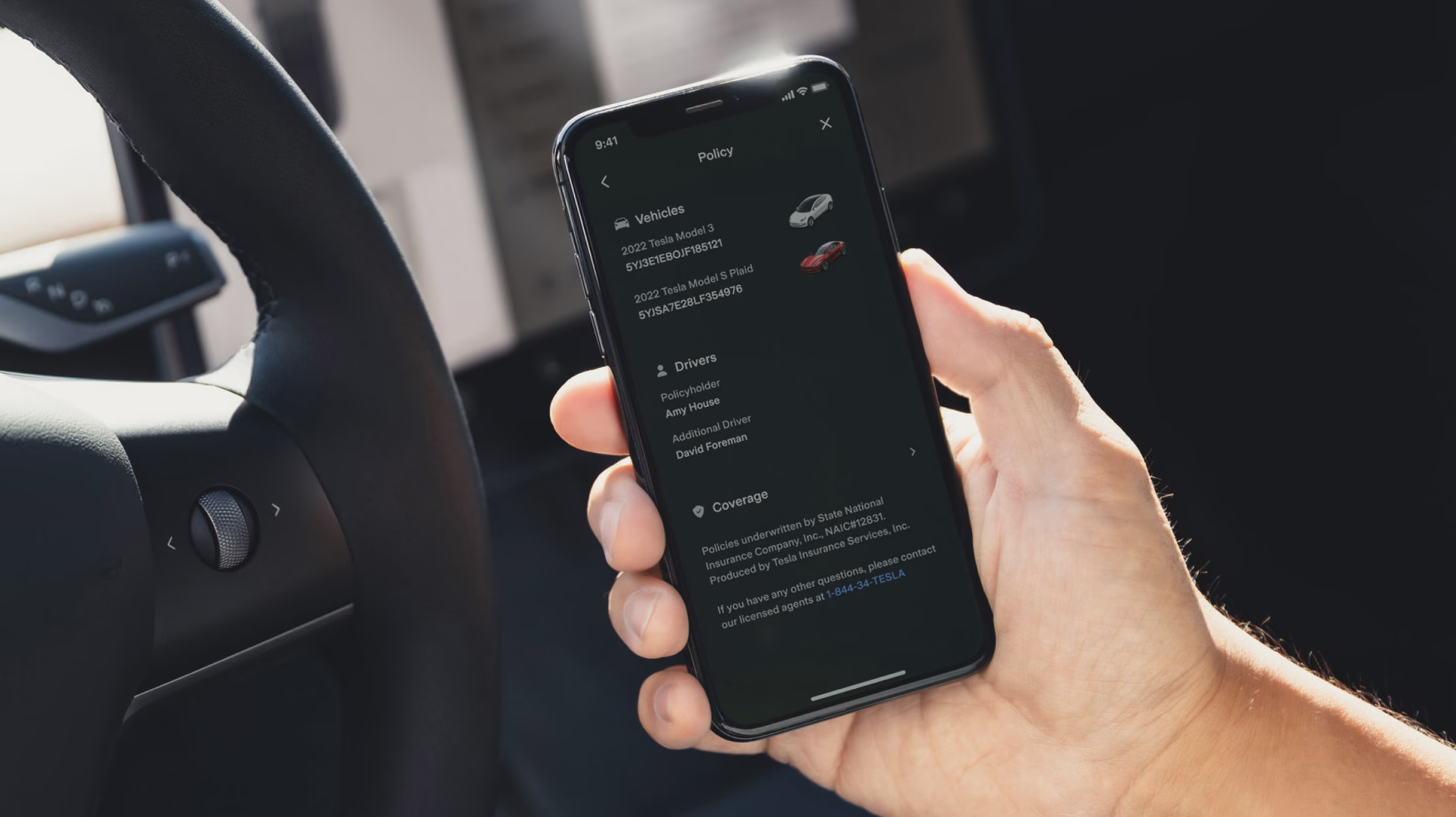
Tesla Insurance has officially expanded to a new U.S. state, its thirteenth since its launch in 2019.
Tesla has confirmed that its in-house Insurance program has officially made its way to Florida, just two months after the company filed to update its Private Passenger Auto program in the state. It had tried to offer its insurance program to drivers in the state back in 2022, but its launch did not happen.
Instead, Tesla refiled the paperwork back in mid-October, which essentially was the move toward initiating the offering this month.
BREAKING: Tesla Insurance has just officially launched in Florida.
This is the first new state to receive @Tesla Insurance in more than 3 years. In total, Tesla insurance is now available in 13 U.S. states (map in thread below of all the states).
Tesla Insurance in Florida uses… pic.twitter.com/bDwh1IV6gD
— Sawyer Merritt (@SawyerMerritt) December 17, 2025
Tesla’s in-house Insurance program first launched back in late 2019, offering a new way to insure the vehicles that was potentially less expensive and could alleviate a lot of the issues people had with claims, as the company could assess and repair the damage itself.
It has expanded to new states since 2019, but Florida presents a particularly interesting challenge for Tesla, as the company’s entry into the state is particularly noteworthy given its unique insurance landscape, characterized by high premiums due to frequent natural disasters, dense traffic, and a no-fault system.
Annual average premiums for Florida drivers hover around $4,000 per year, well above the national average. Tesla’s insurance program could disrupt this, especially for EV enthusiasts. The state’s growing EV adoption, fueled by incentives and infrastructure development, aligns perfectly with Tesla’s ecosystem.
Moreover, there are more ways to have cars repaired, and features like comprehensive coverage for battery damage and roadside assistance tailored to EVs address those common painpoints that owners have.
However, there are some challenges that still remain. Florida’s susceptibility to hurricanes raises questions about how Tesla will handle claims during disasters.
Looking ahead, Tesla’s expansion of its insurance program signals the company’s ambition to continue vertically integrating its services, including coverage of its vehicles. Reducing dependency on third-party insurers only makes things simpler for the company’s automotive division, as well as for its customers.
News
Tesla Full Self-Driving gets sparkling review from South Korean politician
“Having already ridden in an unmanned robotaxi, the novelty wasn’t as strong for me, but it drives just as well as most people do. It already feels like a completed technology, which gives me a lot to think about.”
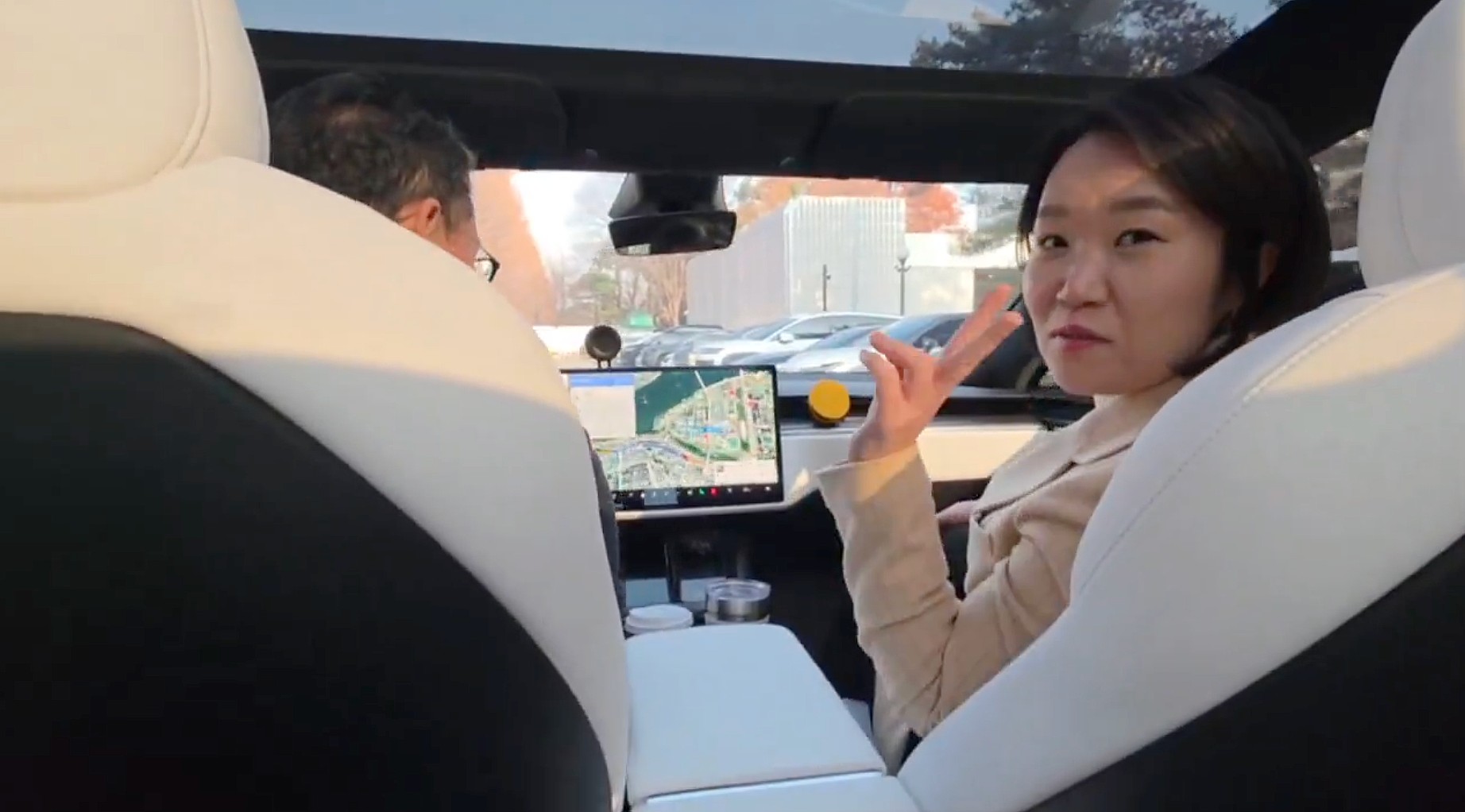
Tesla Full Self-Driving got its first sparkling review from South Korean politician Lee So-young, a member of the country’s National Assembly, earlier this week.
Lee is a member of the Strategy and Finance Committee in South Korea and is a proponent of sustainable technologies and their applications in both residential and commercial settings. For the first time, Lee was able to utilize Tesla’s Full Self-Driving technology as it launched in the country in late November.
Her thoughts on the suite were complimentary to the suite, stating that “it drives just as well as most people do,” and that “it already feels like a completed technology.”
드디어 오늘, 서울에서 테슬라 FSD 체험 했습니다.
JiDal Papa님의 모델S 협찬에 힘입어^^ 파파님 정말 감사합니다.
국회 -> 망원시장 -> 홍익대 -> 국회 복귀 코스였고요.
이미 무인 로보택시를 타봐서 그런지 신기함은
덜했지만, 웬만한 사람만큼 운전을 잘하네요.이미 완성된 기술이라고… pic.twitter.com/8pAidHBpRG
— 이소영 국회의원 (Soyoung Lee) (@im_soyounglee) December 17, 2025
Her translated post says:
“Finally, today I got to experience Tesla FSD in Seoul. Thanks to the Model S sponsored by JiDal Papa^^, I’m truly grateful to Papa. The route was from the National Assembly -> Mangwon Market -> Hongik University -> back to the National Assembly. Having already ridden in an unmanned robotaxi, the novelty wasn’t as strong for me, but it drives just as well as most people do. It already feels like a completed technology, which gives me a lot to think about. Once it actually spreads into widespread use, I feel like our daily lives are going to change a lot. Even I, with my license gathering dust in a drawer, don’t see much reason to learn to drive a manual anymore.”
Tesla Full Self-Driving officially landed in South Korea in late November, with the initial launch being one of Tesla’s most recent, v14.1.4.
It marked the seventh country in which Tesla was able to enable the driver assistance suite, following the United States, Puerto Rico, Canada, China, Mexico, Australia, and New Zealand.
It is important to see politicians and figures in power try new technologies, especially ones that are widely popular in other regions of the world and could potentially revolutionize how people travel globally.








